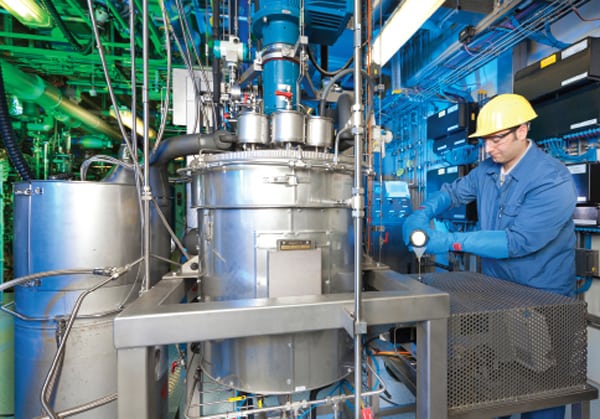Turning Flue Gas Carbon into a Raw Material for Manufacturing
Bayer in February brought online a pilot plant at Chempark Leverkusen, Germany, to recycle carbon dioxide (CO2) scrubbed from the flue gas of a 1,000-MW RWE lignite-fired unit and convert it into a raw material and petroleum substitute for plastic manufacturing. The Bayer facility (Figure 4) essentially produces a chemical precursor into which CO2 is incorporated and then processed into polyurethanes that are used for many everyday items.
 |
| 4. Lemonade out of lemons. A pilot plant built by Bayer and RWE will test a process—a catalysis research breakthrough—by which carbon dioxide scrubbed from a 1,000-MW lignite-fired unit in Germany can be used as a raw material and petroleum substitute for plastic manufacturing. Courtesy: Bayer |
The CO2 used in the project comes from RWE’s Coal Innovation Center in Niederaussem, outside Cologne, where the company operates a carbon scrubber to separate the greenhouse gas from flue gas. The scrubbing process “Is very simple,” RWE said. “In an absorber about 90% of the CO2 contained in the flue gas can be bound to a CO2 solvent at a relatively low temperature and, hence, removed. By raising the temperature, the solvent ‘loaded’ with CO2 is rid of it in a desorber and subsequently transported as a lean solvent back to the absorber, where the scrubbing cycle starts again.”
The process is a result of the industry-sponsored “Dream Production” research project. The pilot plant follows a breakthrough in lab-scale catalysis technology, which researchers say could put CO2 to efficient use for the first time. “For example, carbon dioxide may offer an alternative to petroleum, which has until now been the chemical sector’s main source of the key element carbon,” Bayer said in a statement. “Polyurethanes themselves also help to reduce energy consumption and protect the climate,” the company claims.
If testing for the €9 million project goes well, Bayer and partner power firm RWE say industrial production of plastics based on CO2 could start in 2015.
—Sonal Patel is POWER’s senior writer.